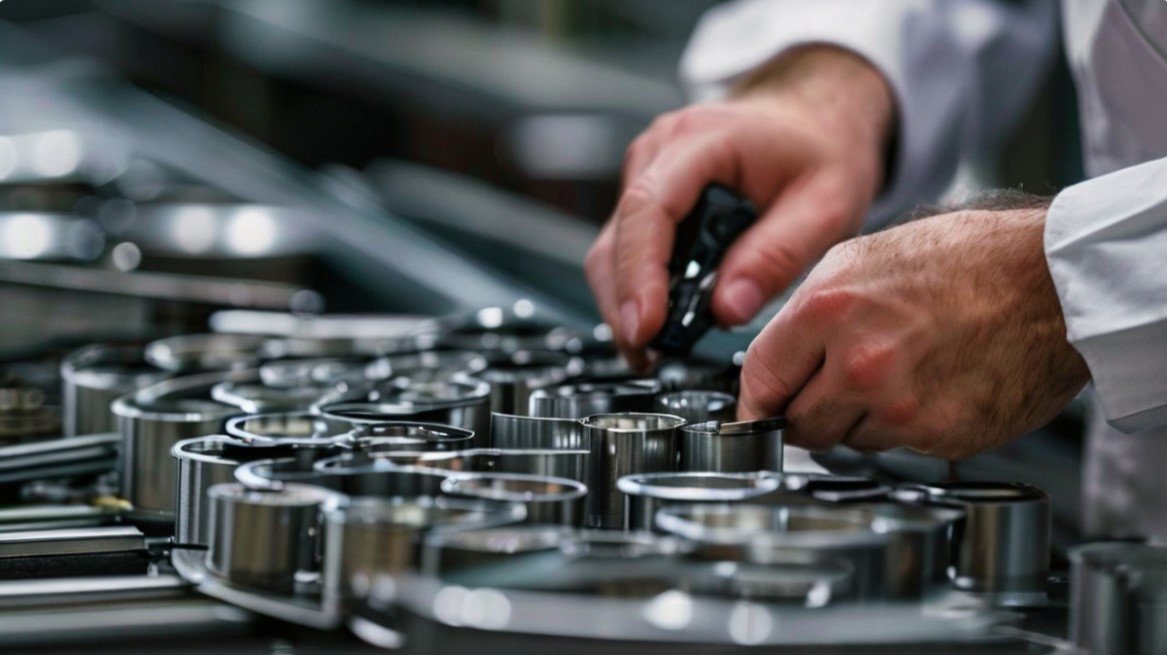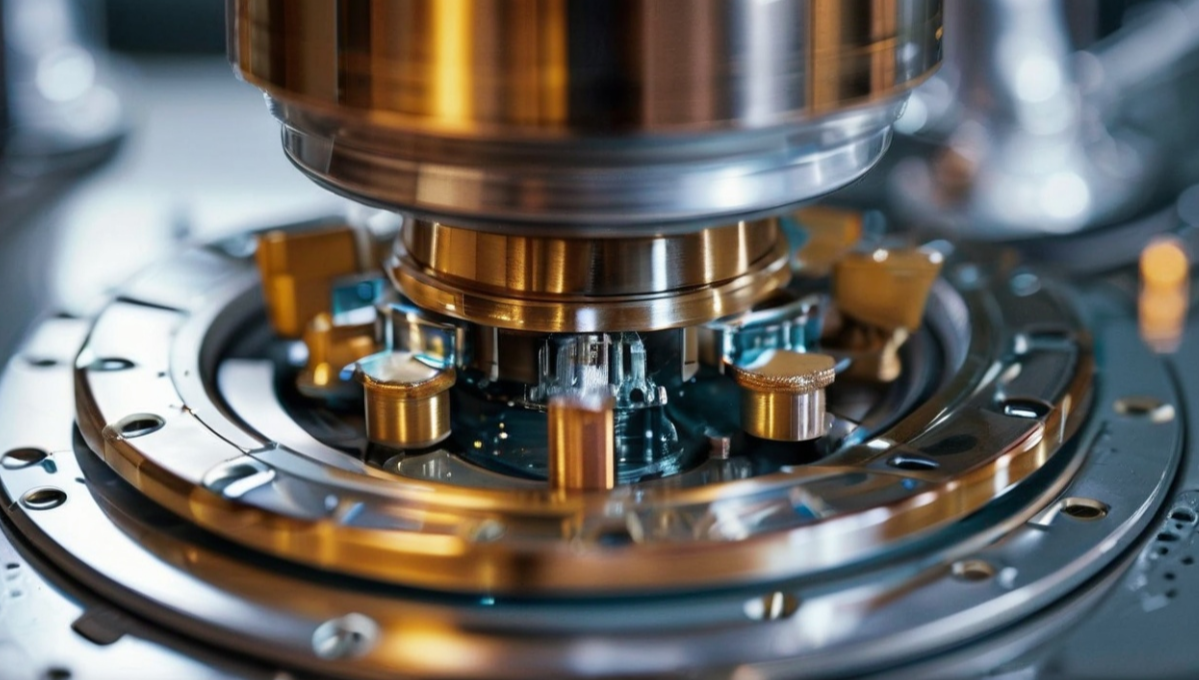Sustainable Cyanide-Free Silver Plating in Metal Finishing
Silver plating has always been crucial in the metal finishing industry due to its ability to improve conductivity, corrosion resistance, throwing power properties and visual appeal. Nevertheless, the use of cyanide-based solutions has presented major environmental and safety issues. The industry has witnessed a revolutionary shift towards cyanide-free silver-plating technologies in recent years, offering a safer and more sustainable future.
Understanding Silver Plating
Silver plating is an electrochemical process that deposits a thin layer of silver onto various substrates, typically metals like copper, brass, or nickel. This technique is widely used across multiple industries, including electronics, automotive, aerospace, and jewelry manufacturing.
Applications of Silver Plating
Electronics:
Silver-plated components are essential for ensuring optimal electrical conductivity in switches, connectors, and printed circuit boards.
Automotive:
The automotive sector utilizes silver-plated parts in various electrical systems to enhance performance and reliability.
Aerospace:
Silver plating is crucial in aerospace applications where high conductivity and corrosion resistance are paramount.
Jewelry:
In the world of decorative arts, silver plating provides an economical way to achieve the lustrous appearance of solid silver.
Medical Instruments:
Silver’s antimicrobial properties make silver-plated instruments valuable in fighting infections in medical settings.
Cyanide-Based Silver Plating
For decades, the industry has relied on cyanide-based solutions for silver plating due to their current efficiency, throwing power, and cost-effectiveness. These solutions typically contain silver cyanide complexes ([Ag(CN)2]-) dissolved in a potassium cyanide electrolyte.
High Efficiency:
Cyanide-based solutions offer rapid plating speeds and excellent throwing power, ensuring uniform coverage even on complex shapes.
Bright Deposits:
The plated silver layer often exhibits a bright, lustrous finish directly out of the bath, minimizing the need for post-plating polishing.
Wide Operating Window:
These baths are relatively forgiving in terms of operating conditions, making them easier to manage in production environment.
Cost-Effectiveness:
The chemicals used in cyanide-based plating are relatively inexpensive, contributing to lower overall production costs.
Environmental and Safety Concerns
Despite its effectiveness, cyanide-based silver plating poses significant risks:
Toxicity:
Cyanide is highly toxic to humans and aquatic life, even in small concentrations.
Environmental Hazards:
Accidental releases or improper handling can lead to severe environmental damage.
Disposal Challenges:
The disposal of cyanide-containing waste requires specialized treatment processes, adding to operational costs and complexity.
Conversion to Cyanide-Free Silver Plating
The development of cyanide-free silver-plating processes represents a significant step forward in making the industry more sustainable. This innovation aligns with broader trends towards a green electroplating process, which aim to reduce hazardous chemical use, lower energy consumption, and minimize waste.
Cyanide-Free Silver-Plating Solutions
Several types of cyanide-free silver-plating solutions have emerged as viable alternatives:
Thiosulfate Solutions:
These baths use silver thiosulfate complexes and are known for their stability and ability to produce bright, uniform deposits.
Sulfite Solutions:
Silver sulfite complexes form the basis of these baths, offering good throwing power and excellent electrical properties.
Succinimide Solutions:
These newer formulations use silver succinimide complexes and have shown promising results in terms of deposit quality and plating efficiency
Pyrophosphate Solutions:
While less common, these baths have found niche applications, particularly where specific deposit properties are required.
Advantages of Cyanide-Free Plating Solutions
The adoption of cyanide-free silver-plating processes presents several key benefits:
Environmental Impact:
Cyanide-free solutions eliminate the need for hazardous waste disposal protocols, reducing the environmental footprint of plating facilities.
Health and Safety:
By removing cyanide from the equation, workers in the plating industry are exposed to fewer health risks, contributing to a safer workplace.
Regulatory Compliance:
Companies can more easily comply with stringent environmental regulations, avoiding costly fines and potential legal issues.
Process Efficiency:
Many cyanide-free technologies maintain or even improve upon the efficiency and quality of traditional silver-plating methods.
Challenges in Implementing Cyanide-Free Plating
Despite the numerous benefits, transitioning to cyanide-free silver plating is not without its challenges:
Cost of Transition:
Implementing new technologies often requires significant upfront investment in equipment, training, and process redesign. Stability of the electrolyte, shelf line, and metals turn over are a few factors one must take into account.
Performance Parity:
Some industries may be hesitant to adopt new methods without assurance that they perform as well as traditional techniques, especially for applications requiring exceptionally high conductivity or corrosion resistance.
Process Stability:
Maintaining the stability and consistency of cyanide-free plating baths can be more challenging than with cyanide-based solutions, requiring careful control of the plating environment.
Comparative Analysis of Cyanide-Free and Traditional Methods
When evaluating the shift from traditional cyanide-based methods to cyanide-free alternatives, several key factors come into play:
Plating Efficiency and Quality:
Many cyanide-free solutions can now match or even exceed the plating speed and deposit quality of cyanide baths, though performance can vary depending on the specific application and bath chemistry.
Cost Considerations:
While initial transition costs may be higher, long-term savings can be realized through reduced waste treatment costs and simplified safety protocols.
Environmental Impact:
Cyanide-free solutions significantly reduce the risk of environmental contamination and typically require less intensive waste treatment processes.
Safety Profile:
The elimination of cyanide dramatically improves workplace safety, reducing the need for specialized handling procedures and emergency response plans.
Versatility:
While cyanide baths are known for their wide operating window, many cyanide-free alternatives are catching up in terms of versatility and ease of use.
The Future of Cyanide-Free Silver Plating
As environmental regulations continue to tighten, the demand for cyanide-free silver plating is expected to grow. Companies at the forefront of this innovation will likely lead the way in developing and commercializing these technologies.
Emerging Technologies
Advances in related fields, such as additive manufacturing and nanotechnology, could further enhance the performance of cyanide-free plating processes. For instance, the use of nanoparticles in plating baths has shown promise in improving deposit quality and bath stability, addressing some of the challenges currently facing cyanide-free methods.
Collaborative Efforts
As the industry evolves, collaboration between academic researchers, plating companies, and regulatory bodies will be critical to ensuring the success of cyanide-free technologies. By working together, these stakeholders can accelerate the adoption of safer, more sustainable silver-plating processes that meet the needs of modern industry while protecting the environment.
Conclusion
The move to cyanide-free silver plating is a major step towards more environmentally friendly and safer industrial practices. Despite challenges in cost, performance, and process stability, ongoing research will likely overcome these obstacles.
You may like also
Zincate-Free Nickel Electroless Deposition for High-Performance Microelectronics
As the benefits of cyanide-free technologies become more widely recognized, we can expect to see increased adoption across industries that rely on silver plating. Ultimately, these innovations will help to create a more sustainable and responsible future for the metal finishing industry, aligning with global efforts to reduce environmental impact and enhance workplace safety.
The industry’s adoption of cyanide-free silver-plating solutions addresses environmental and safety concerns while ensuring long-term success in an eco-conscious global market. The future of silver plating is bright, sustainable, and cyanide-free.

Posted By:Venkat Raja
Sep 24, 2024
Tags:








